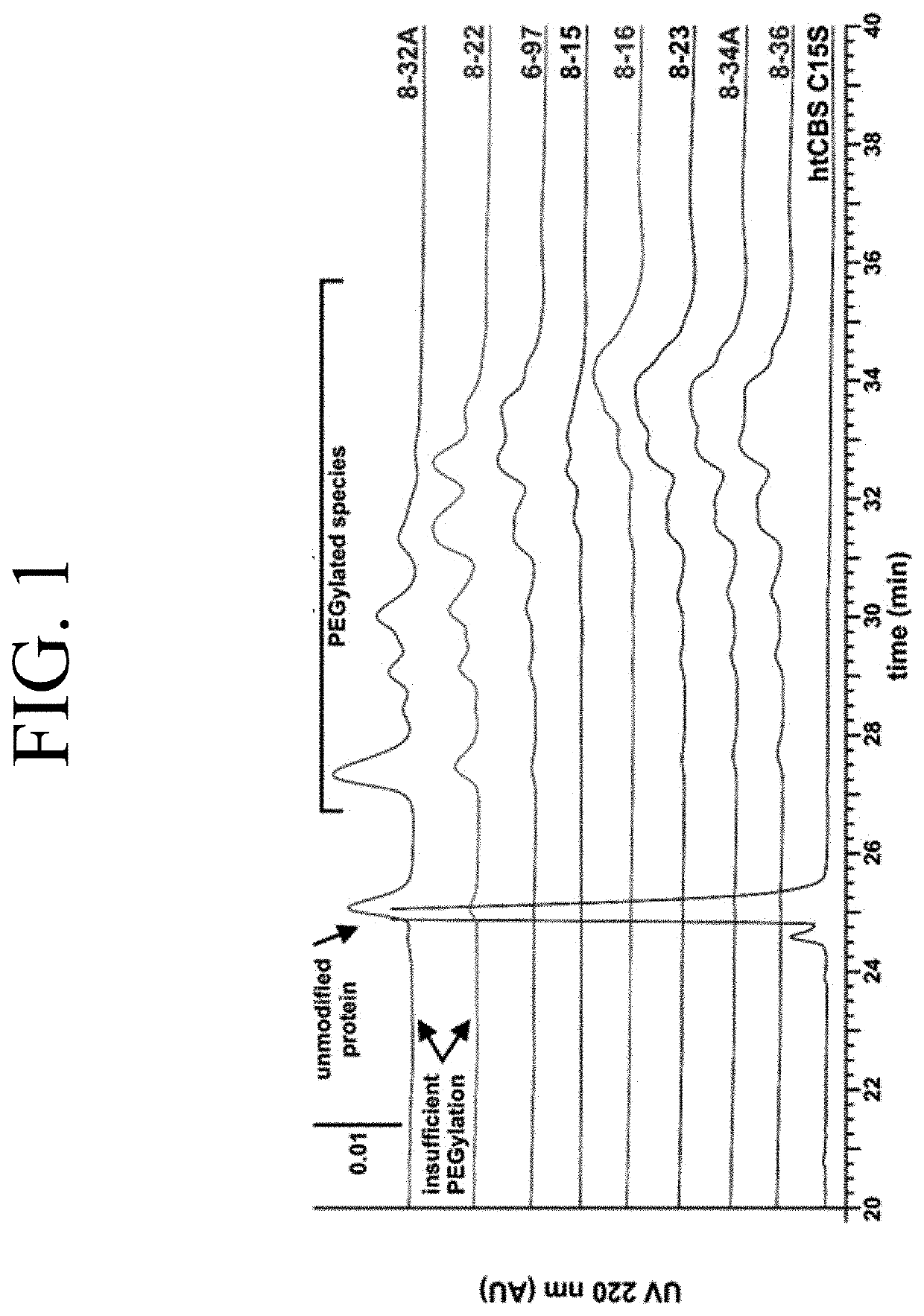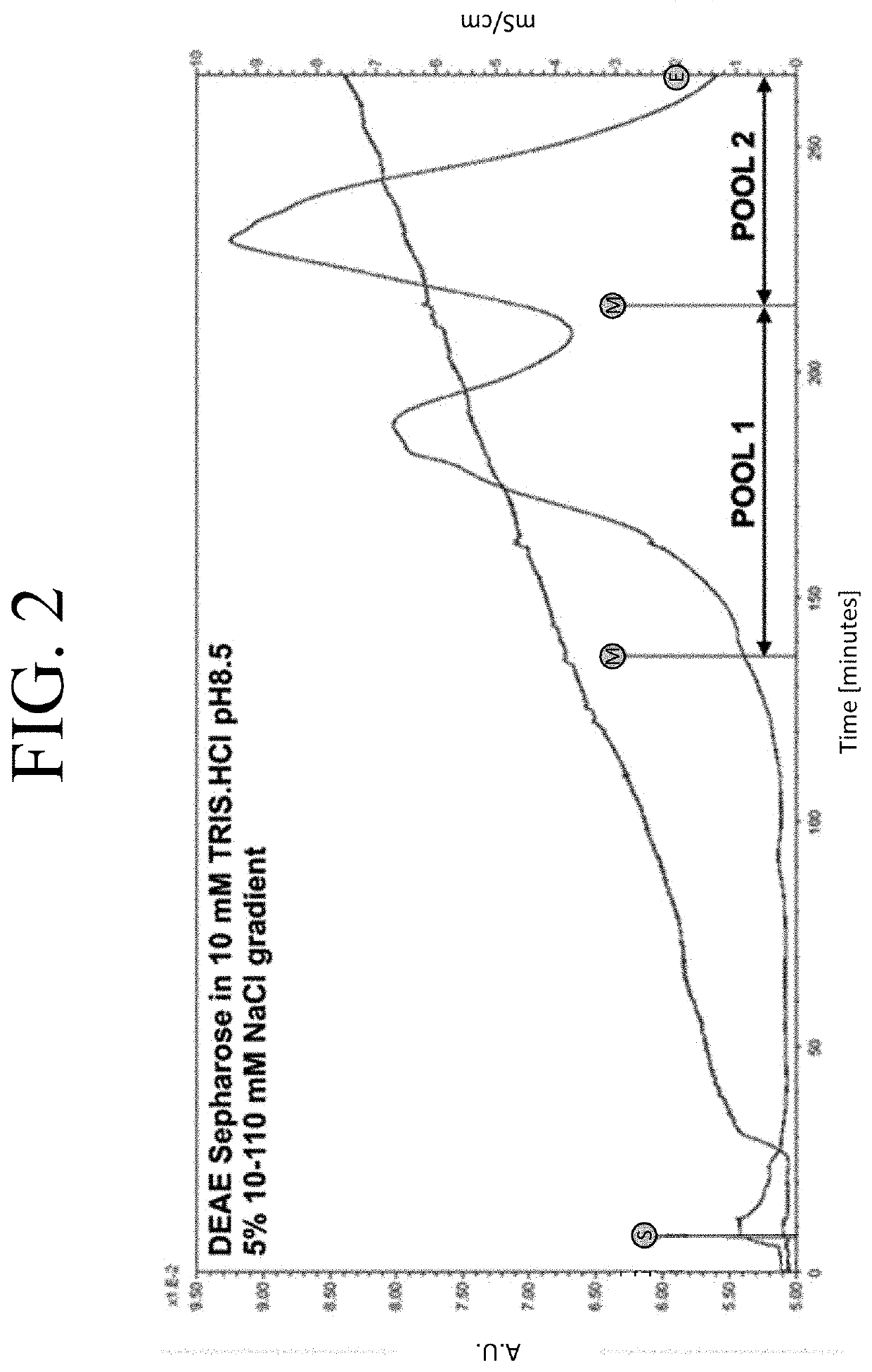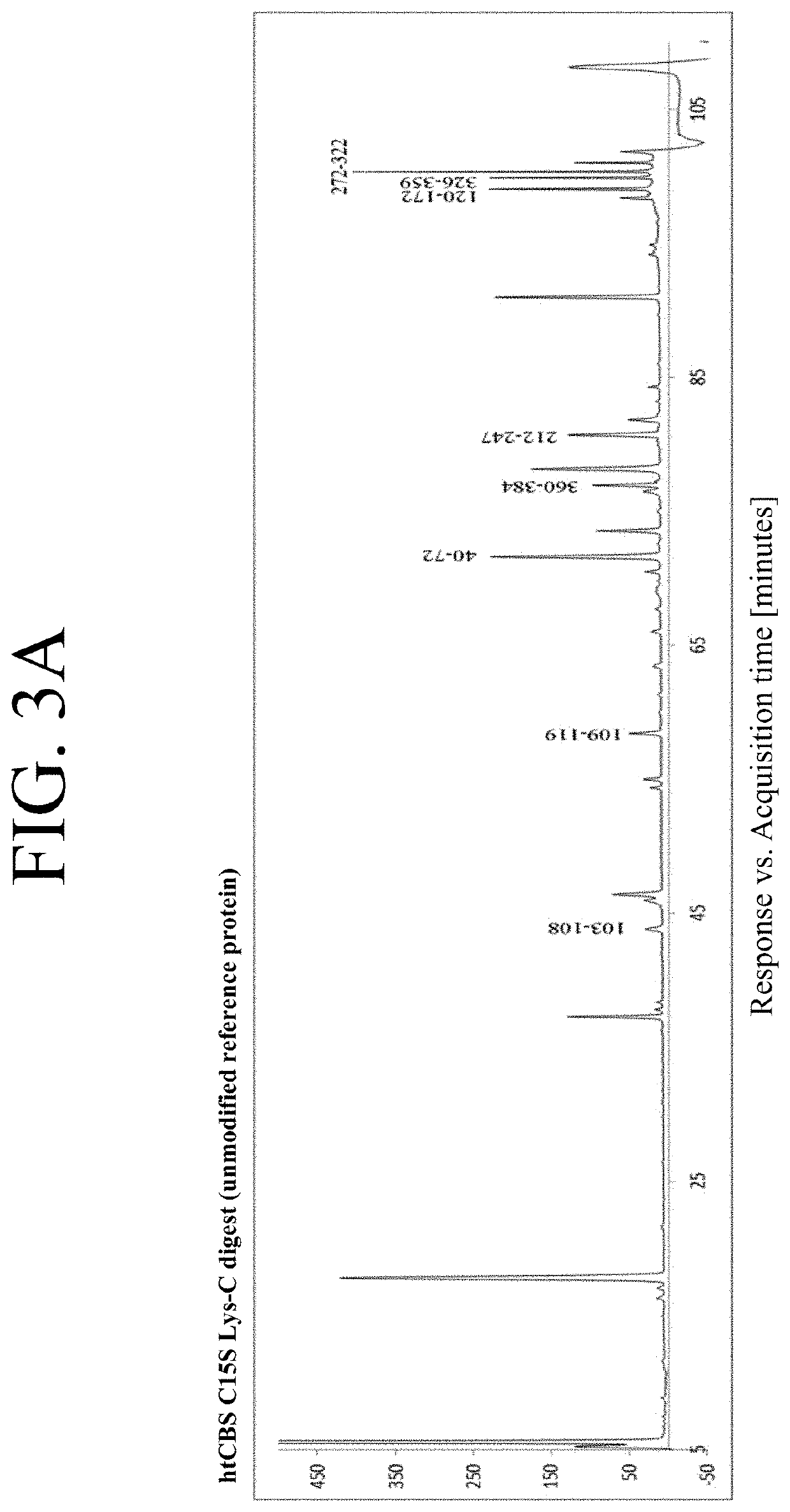Optimization of enzyme replacement therapy for treatment of homocystinuria
a technology of enzyme replacement therapy and homocystinuria, which is applied in the direction of enzyme stabilisation, peptide/protein ingredients, lyases, etc., can solve the problems of poor conformity of hcu patients to the diet, and achieve the effect of reducing the amount of insufficient pegylation
- Summary
- Abstract
- Description
- Claims
- Application Information
AI Technical Summary
Benefits of technology
Problems solved by technology
Method used
Image
Examples
example 1
tal Procedures
A. Chemicals
[0086]Unless stated otherwise, all materials were purchased from SIGMA-ALDRICH® or FISHER SCIENTIFIC™. L-[14C]-serine was obtained from PERKIN ELMER®, Life Sciences.
B. Animals
[0087]All animal procedures were approved under animal protocol # B-49414(03)1E by the University of Colorado Denver Institutional Animal Care and Use Committee (IACUC), which is an AAALAC INTERNATIONAL®-accredited (#00235), Public Health Service-assured (# A 3269-01) and USDA-licensed (#84-R-0059) institution. “Human Only” (HO) mice were previously generated and propagated and genotyped as described in Maclean et al., Mol. Genet. Metab. 2010, 101, (2-3), 153-62; Bublil et al., J Clin Invest 2016, 126, (6), 2372-84: and International application PCT / 2016 / 061050, which are hereby incorporated by reference in their entireties. Animals were maintained on extruded standard diet 2918, 2919, or 2920X from TEKLAD GLOBAL RODENT DIETS® (Harlan. Livermore, Calif., USA). A single-use lancet for s...
example 2
g PEGylation of htCBS C15S
[0096]To understand the PEGylation patterns and to optimize the conjugation reaction to yield a more uniform modification, the individual PEG-htCBS C15S species were separated and the residues targeted with the ME-400MA maleimide PEG molecules were later identified (FIG. 2). First, the PEGylation reaction was loaded onto a DEAE Sepharose column equilibrated in a buffer with low conductivity and higher pH (10 mM TRIS.HCl pH 8.5) to enhance binding of all 400MA PEG-htCBS C15S species and ran on a shallow salt gradient (5%, 10-110 mM NaCl) to elute the protein. FIG. 2 shows a chromatogram of such a run and the recovery of two pools, which were subsequently analyzed along with an unmodified htCBS C15S and 400MA PEG-htCBS C15S reaction mixture on SDS-PAGE and native PAGE. Gel analysis of the pools provided evidence that the 400MA PEG-htCBS C15S consisted of at least 3 different PEG-htCBS C15S species.
[0097]Pool 1 (P1) was enriched in forms which had a weaker neg...
example 3
bility of PEGylation of htCBS C15S with NHS Ester PEG Molecules
[0102]The issues with reproducibility of htCBS C15S PEGylation with maleimide PEGs led to analysis of other PEGylation chemistries, particularly the use of NHS ester-activated PEGs. First, modification of htCBS C15S was assessed with three NHS ester PEG molecules to determine their impact on enzyme activity. Four, three and two different PEG:CBS molar ratios were tested in PEGylations with 5, 10 and 20 kDa linear NHS ester PEG molecules, respectively. Unlike the site-selective maleimide PEGylation, the NHS ester PEG molecules yielded a reproducible mixture of highly modified isomers that were practically inseparable using SDS-PAGE as well as by native PAGE or SEC-HPLC.
[0103]For example, htCBS C15S modified by three linear 5, 10, and 20 kDa NHS ester PEG molecules (5NHS, 10NHS, and 20NHS) in different molar excesses of PEG molecules to the CBS protein were separated on SDS-PAGE (BIORAD® 10% Mini-PROTEAN® TGX gel) or nativ...
PUM
| Property | Measurement | Unit |
|---|---|---|
| Fraction | aaaaa | aaaaa |
| Fraction | aaaaa | aaaaa |
| Fraction | aaaaa | aaaaa |
Abstract
Description
Claims
Application Information
 Login to View More
Login to View More - R&D
- Intellectual Property
- Life Sciences
- Materials
- Tech Scout
- Unparalleled Data Quality
- Higher Quality Content
- 60% Fewer Hallucinations
Browse by: Latest US Patents, China's latest patents, Technical Efficacy Thesaurus, Application Domain, Technology Topic, Popular Technical Reports.
© 2025 PatSnap. All rights reserved.Legal|Privacy policy|Modern Slavery Act Transparency Statement|Sitemap|About US| Contact US: help@patsnap.com



